The 2019 Nissan Rogue compact crossover makes a wonderful first impression. Its attractive styling bucks the usual trend of frumpy and/or utilitarian design, and despite this model being around for five years since its last full redesign, it still looks pretty fresh. The interior similarly looks good, there's plenty of up-to-date tech, and those seeking lots of family-friendly space will find one of the roomiest cabins in the segment.
However, the longer you spend with the Rogue, you might start to notice the underpowered engine, unrefined transmission and general dreary driving experience. Back-to-back test drives of key competitors — most of which have been more recently redesigned — might also reveal that they manage to at least match the Rogue's strong points while substantially bettering it in others. Not a bad choice, but we think there are better ones.
Note that the Nissan Rogue Sport is a different, smaller SUV altogether.
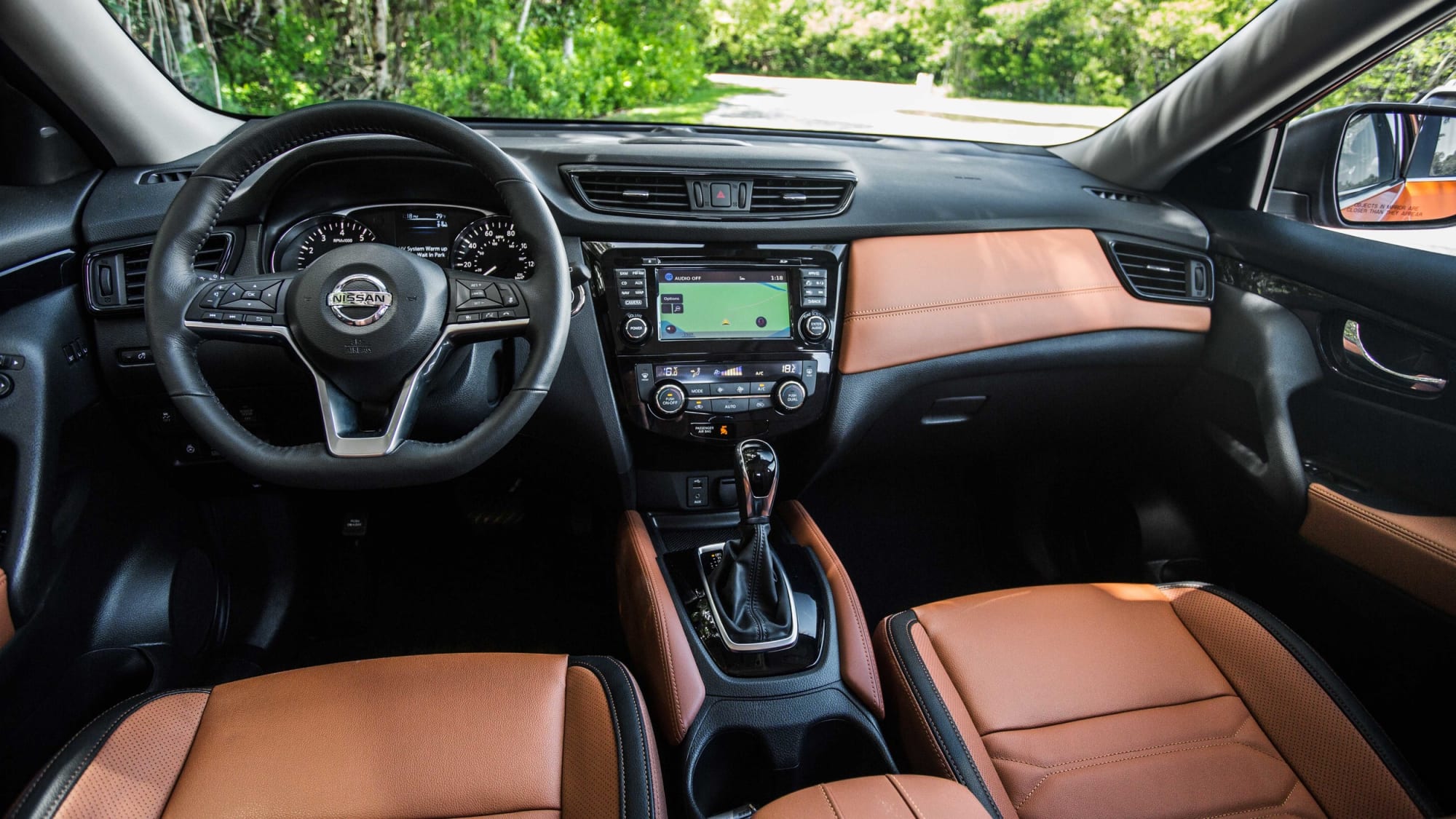
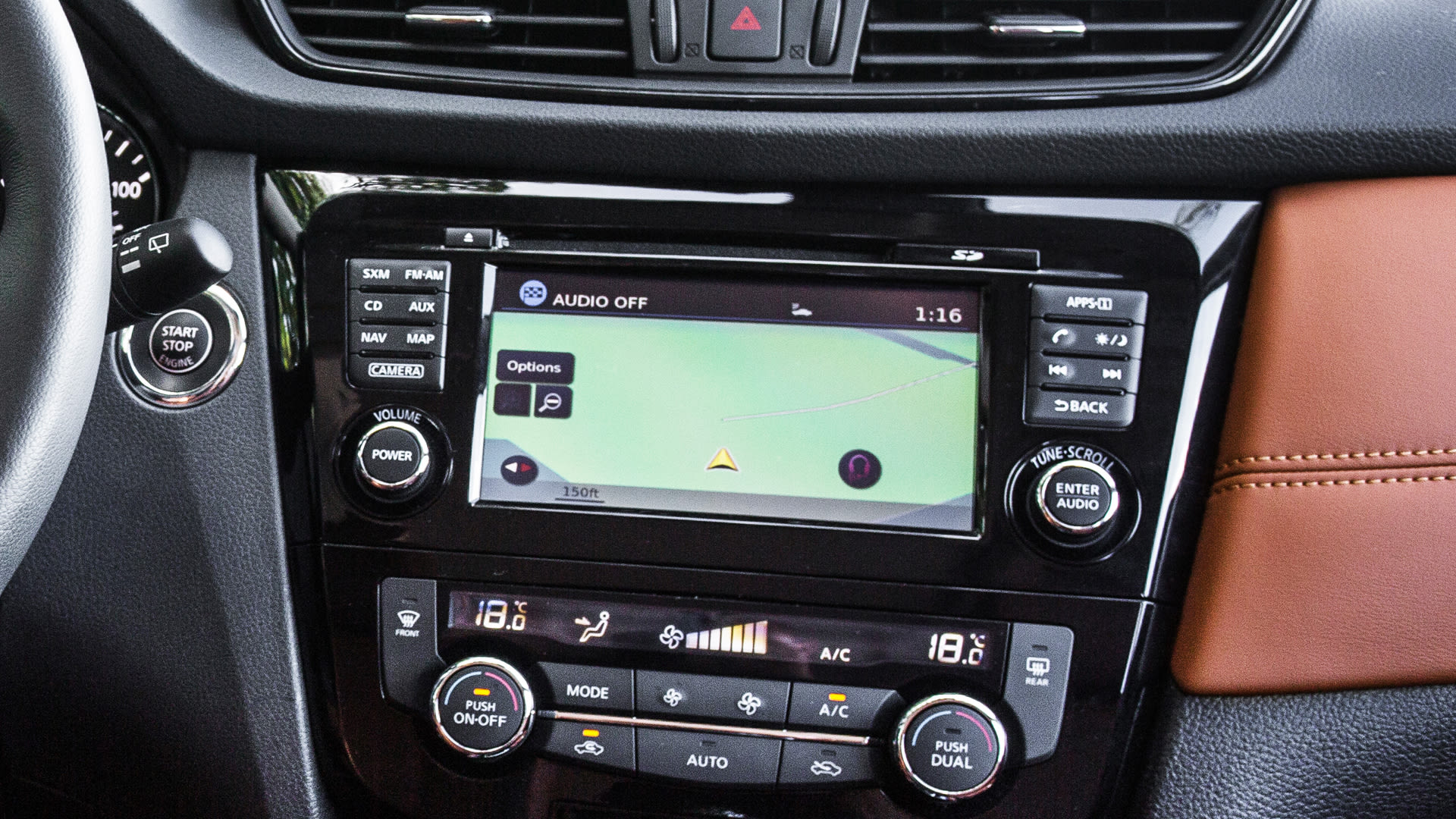
Taller folks may find that the driver seat does not sufficiently adjust, whether with the standard six-way manual or upgrade eight-way power seat. Otherwise, the seats themselves are quite comfortable.
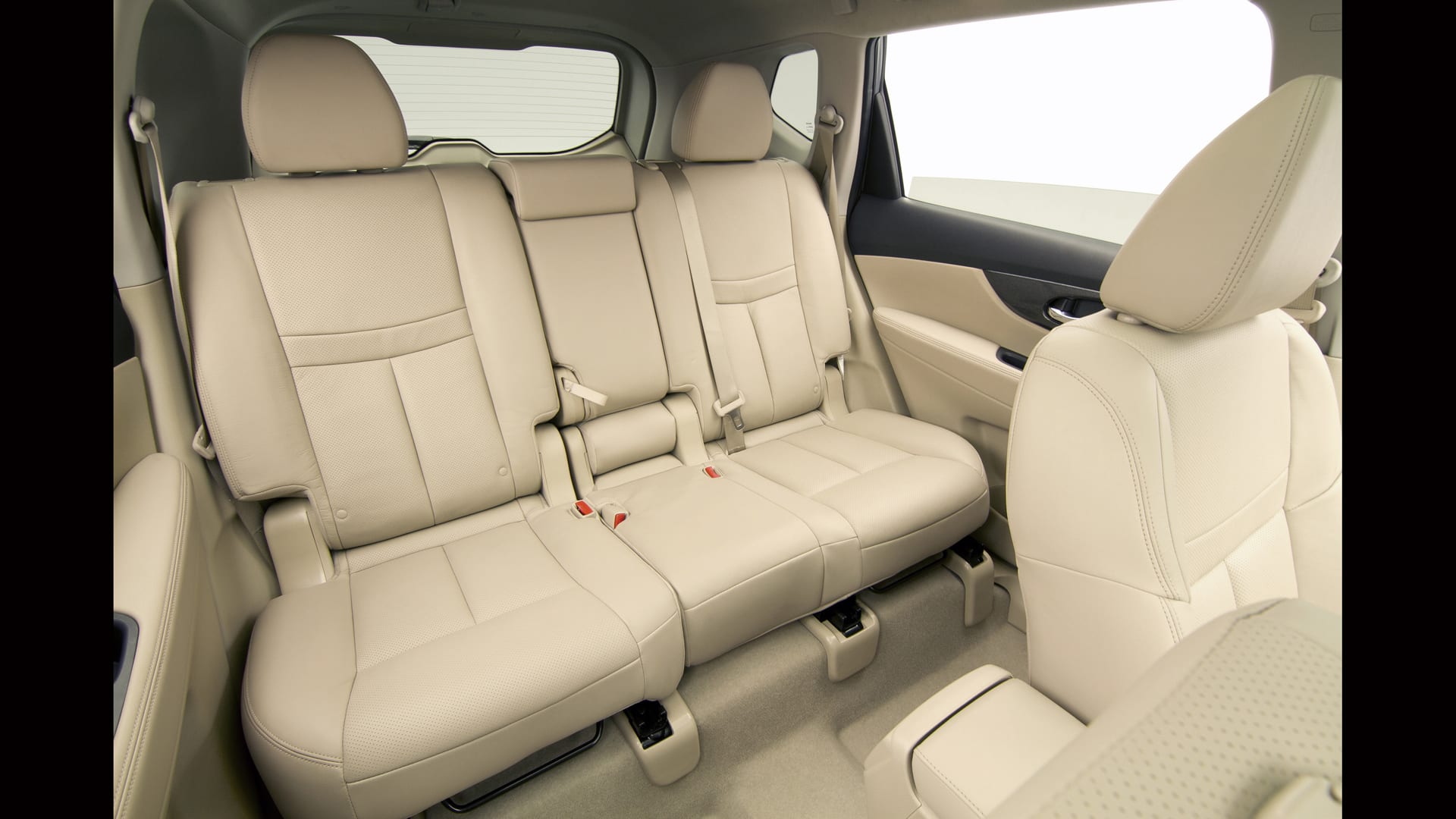
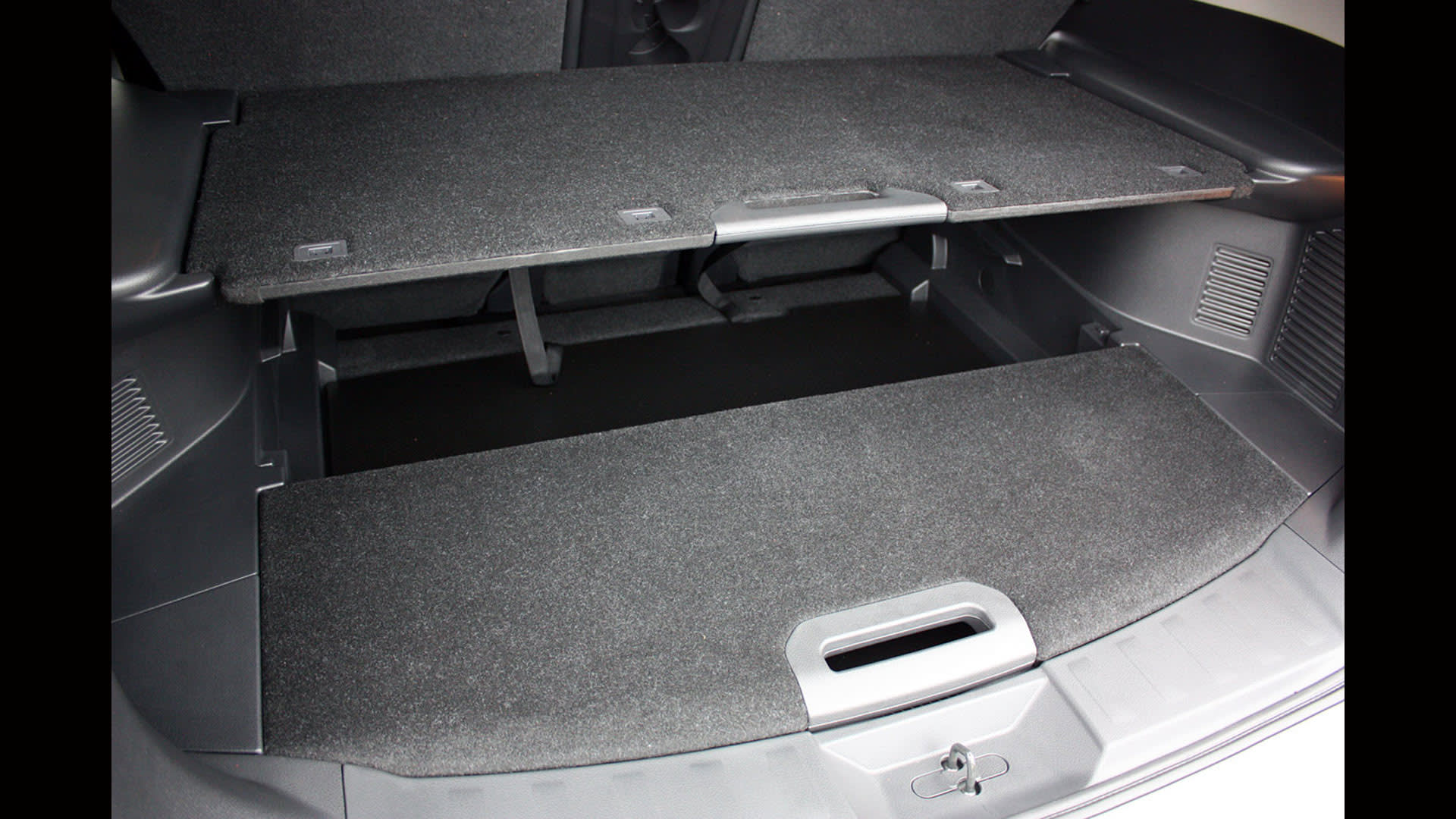
That's a bonus because the Rogue already has more space behind its raised second-row seat than anything else in the segment: 39.3 cubic feet. It also features the standard "Divide-N-Hide" cargo system of floor panels that allows for different floors heights, multiple tiered shelves or a rigid divider. Shown above, it's quite clever and no competitor offers anything quite like it. Maximum cargo capacity of 70 cubic feet is among the biggest in the segment, with only the Tiguan, Forester and Honda CR-V offering more.
However, the longer you spend with the Rogue, you might start to notice the underpowered engine, unrefined transmission and general dreary driving experience. Back-to-back test drives of key competitors — most of which have been more recently redesigned — might also reveal that they manage to at least match the Rogue's strong points while substantially bettering it in others. Not a bad choice, but we think there are better ones.
Note that the Nissan Rogue Sport is a different, smaller SUV altogether.
What's new for 2019?
Every Nissan Rogue now comes standard with forward collision warning with pedestrian detection and automatic emergency braking, lane-departure warning, and high-beam assist. Rear automatic braking and rear parking sensors are now standard on the SV and SL trim levels. The latter also gains Nissan's ProPilot Assist adaptive cruise control and advanced lane-keeping system. There are also new Special Edition and Premium packages available.

What's the interior and in-car technology like?
The Rogue's cabin is arguably its finest attribute. It starts with a more attractive, car-like design than several top rivals, and on top trim levels, simulated leather trim on the dash and center console create a luxurious look and feel. Overall materials quality is typical for the compact SUV segment. The standard seven-inch touchscreen isn't quite as large as the displays in some rivals and is also mounted a bit low, but it's also pretty easy to use and we always appreciate the presence of actual buttons and knobs in support of a touchscreen. Apple CarPlay and Android Auto are standard on every trim level, but there's only one USB port available.Taller folks may find that the driver seat does not sufficiently adjust, whether with the standard six-way manual or upgrade eight-way power seat. Otherwise, the seats themselves are quite comfortable.


How big is it?
The Rogue is one of the largest compact SUVs: only the Volkswagen Tiguan is longer and the Subaru Forester taller. It's also one of the heaviest, which certainly doesn't do its engine any favors. Interior space is commensurately generous. The back seat's legroom figure of 37.9 inches may seem unremarkably midpack, but its ability to slide provides a degree of versatility most rivals no longer offer. Sliding the seats forward allows you to bring kids in child seats a bit closer to mom and dad, or creates more space in the cargo area.That's a bonus because the Rogue already has more space behind its raised second-row seat than anything else in the segment: 39.3 cubic feet. It also features the standard "Divide-N-Hide" cargo system of floor panels that allows for different floors heights, multiple tiered shelves or a rigid divider. Shown above, it's quite clever and no competitor offers anything quite like it. Maximum cargo capacity of 70 cubic feet is among the biggest in the segment, with only the Tiguan, Forester and Honda CR-V offering more.
What's the performance and fuel economy?
The Nissan Rogue comes standard with a 2.5-liter four-cylinder engine that produces 170 horsepower and 175 pound-feet of torque. That's worse than every competitor, and the Rogue isn't lighter to compensate. A continuously variable automatic transmission (CVT) and front-wheel drive are standard, while all-wheel drive is optional. EPA-estimated fuel economy with FWD is 26 mpg city, 33 mpg highway and 29 mpg combined. It lowers to 25/32/27 with AWD. Either way, it is among the most efficient in the segment — but remember, competitors manage to match that fuel economy while bettering the Rogue's performance.There is also the Rogue Hybrid. It has a 2.0-liter four-cylinder paired to an electric motor. Front- or all-wheel drive are available. Fuel economy is estimated to be 33/35/34 with FWD and 31/34/33 with AWD. This is obviously much better than the segment norm, but the Toyota RAV4 Hybrid tops 40 mpg.
What's it like to drive?
Quite simply, the Rogue is dreary to drive. The CVT is prone to droning when accelerating hard – and given the underpowered engine, you'll be doing that a lot. The steering's responsiveness and feedback trail that of most rivals, providing little engagement to the driver. Handling is indifferent, yet the ride is nothing special for the segment, either. The Rogue's handsome styling and functional interior may make a good first impression, but it wears off as the miles pile on. At its best, it's merely fine. Many rivals are more than that.What more can I read about the Nissan Rogue?
Testing ProPilot Assist in the Nissan Rogue
We try out the Rogue's ProPilot Assist adaptive cruise control and steering assist system, which essentially handles the accelerator, brakes and steering for you when on the freeway – including when stuck in stop-and-go traffic.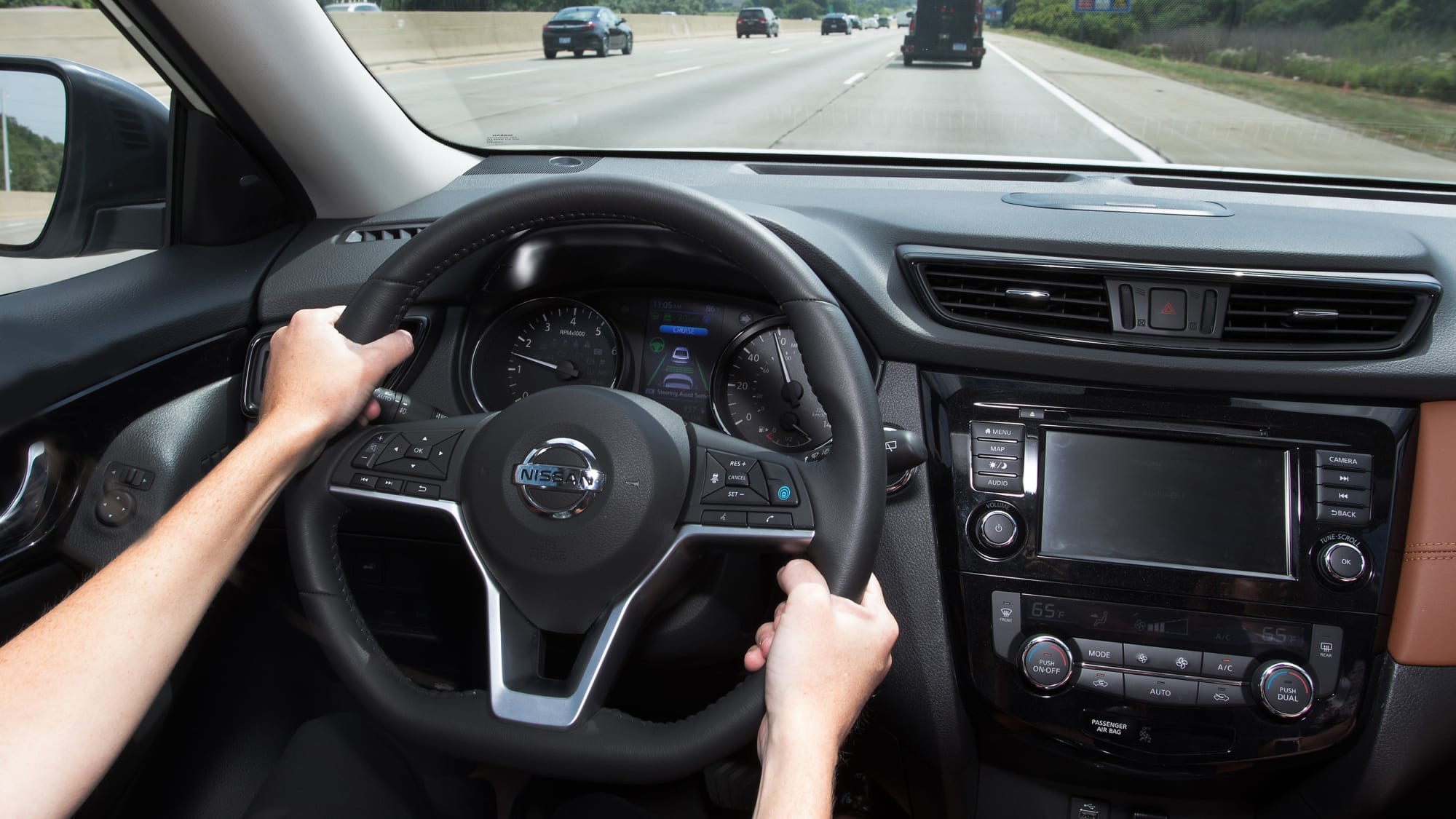
2014 Nissan Rogue First Drive Review
The current Rogue dates back to 2014, and this was our first impressions of it. Feature content has been enhanced since then — especially in terms of safety tech — and the styling has been tweaked, but the interior packaging, powertrain and driving experience have remained consistent.
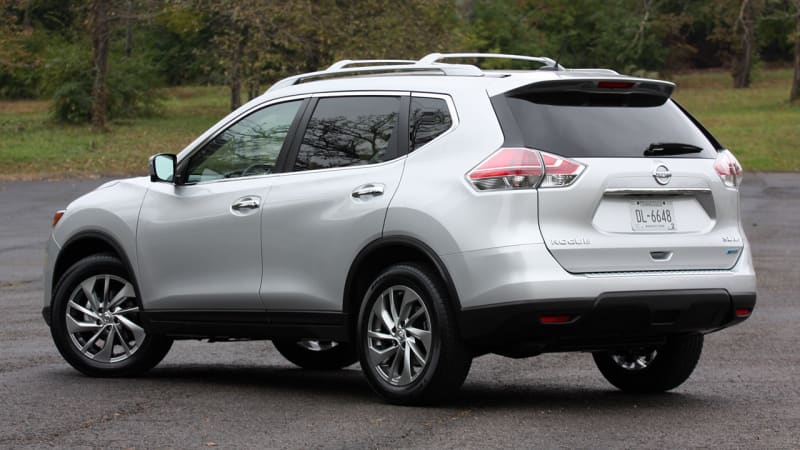
What features are available and what's the price?
Pricing for the 2019 Nissan Rogue starts with the S trim level at $25,965, including the $1,045 destination charge.
Standard equipment on the S includes 17-inch steel wheels, a variety of accident avoidance tech (see safety section below), a height-adjustable driver seat, cloth upholstery, a 40/20/40 back seat (slide, reclines and folds), the Divide-N-Hide cargo system (see How big is it? section), a seven-inch touchscreen, one USB port, satellite radio, a CD player, Apple CarPlay, Android Auto and a four-speaker sound system.
To see what extra features come on the SV ($27,385) and SL ($32,435) trim levels, check out this breakdown of features, pricing and specs here on Autoblog.
The Rogue Hybrid SV starts at $28,645, while the SL Hybrid goes for $32,585. It has a separate breakdown of Rogue Hybrid features, pricing and specs here on Autoblog.
What's its safety equipment and crash ratings?
Besides the expected array of airbags and stability aids, every Nissan Rogue comes standard with forward collision warning with pedestrian detection and automatic emergency braking, lane-departure warning and keeping assist, blind-spot and rear cross-traffic warning, and automatic high beam control. This is more than even the RAV4 and CR-V provide. Rear automatic braking is also included in the SV and SL trim levels.The government gives the Rogue four stars for overall and frontal crash safety, along with a five-star side crash rating. The Insurance Institute for Highway Safety gives it the best-possible marks in crash tests and for its front crash prevention system.











Sign in to post
Please sign in to leave a comment.
Continue